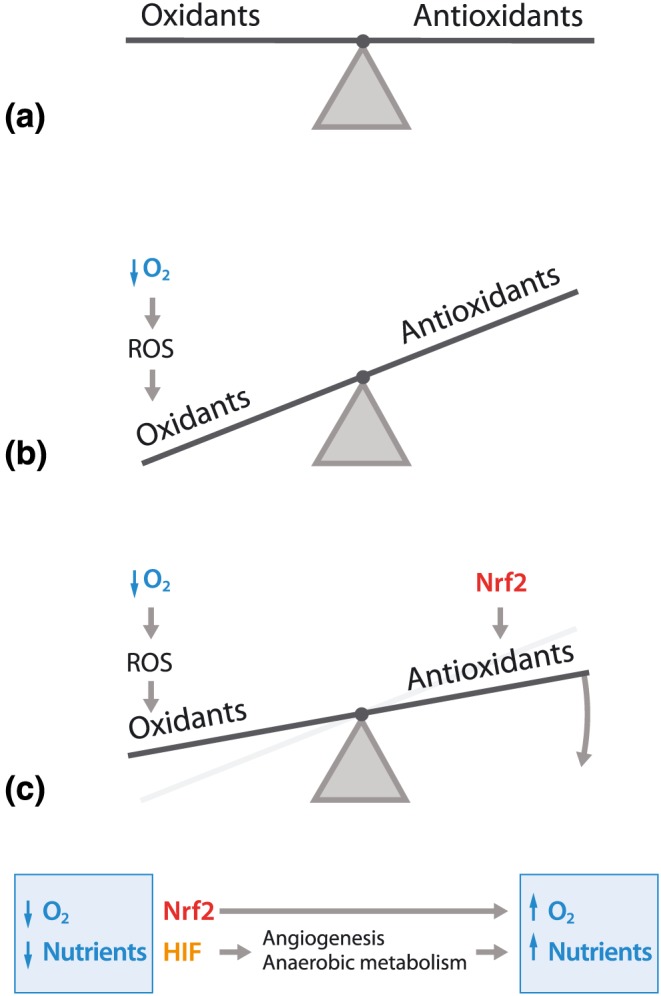Figure 2.

(a) In physiological conditions, cells have a tightly regulated and highly dynamic redox balance to maintain an equilibrium between oxidants and antioxidants. The cell is continuously exposed to different endogenous and exogenous oxidant and antioxidant challenges, but with endogenous oxidant generators and modulation of endogenous antioxidant systems, the cell is capable of maintaining the balance. (b) When the cell is exposed to more oxidants than the endogenous antioxidant systems can handle, this can disrupt the balance and induce a phenomenon called oxidative stress. This can happen, for example, when cells are exposed to an excess of oxygen, called hyperoxia. Hyperoxia dramatically increases the rate of aerobic metabolism, resulting in the generation of reactive oxygen species (ROS) due to incomplete metabolism, which in turn disrupts the redox balance and results in damage to cellular macromolecules, including DNA, lipids, and proteins. (c) The redox balance can be restored by targeting endogenous modulators of the endogenous antioxidant systems. For example, enhancement of the transcription factor Nrf2 increases (basal) levels of endogenous antioxidant systems (Sthijns et al., 2017), whereas increasing the transcription factor hypoxia inducible factor (HIF) induces anaerobic metabolism, stimulates angiogenesis, and increases glutaminase‐mediated glutathione synthesis, thereby enhancing endogenous antioxidant systems (Stegen, van Gastel, et al., 2016; Thirlwell, Schulz, Dibra, & Beck, 2011)
